At first glance, soaring stock markets would suggest robust economic fundamentals. Yet in 2025, this perception doesn’t hold. The primary driver behind current market performance isn’t productivity or profitability. It’s policy. And that should prompt some reflection among traders and investors.
Sentiment appears euphoric. Bitcoin has rallied sharply, and gold is reinforcing its reputation as a safe-haven asset. But when one considers the broader macro landscape, it feels suspiciously optimistic. This isn’t a rally born of corporate earnings or broad-based confidence.
Liquidity At The Core
Since 2020, the US money supply has expanded dramatically. M2, which includes cash, current and savings accounts, and money market funds, has reached unprecedented levels. This didn’t unfold organically.
The Federal Reserve injected trillions into the system via aggressive quantitative easing and ultra-low interest rates in response to the COVID-19 crisis. While this stabilised markets in the short term, it also unleashed an era of abundant, low-cost capital.
In such an environment, cash doesn’t sit idle. With interest rates near zero, investors pivot away from deposits and bonds, channelling funds into equities, property, gold, and increasingly, cryptocurrencies. This capital inflow into a finite pool of assets naturally drives prices higher.
A Familiar Playbook
This pattern isn’t unfamiliar. Following the 2008 financial crisis, central banks embarked on a similar path, fuelling one of the longest bull markets in history. What we’re witnessing now is a magnified version. The scale and pace of post-2020 monetary expansion dwarfs anything previously seen, boosting blue-chip stocks and speculative and defensive assets.
Crucially, much of this new liquidity bypasses consumer spending, funnelling straight into financial markets. That’s why we’re seeing record-breaking asset prices while other economic indicators falter. Corporate earnings remain underwhelming, and labour market data sends mixed signals. Yet markets continue climbing, driven by liquidity rather than fundamentals.
The Fed hasn’t relied solely on printing money. Measures such as adjustments to the Supplementary Leverage Ratio have enabled banks to lend more and hold additional government debt. While these tools support markets during periods of instability, they also highlight the extent to which central banks are willing to intervene.
The Risk Of Dependency
Such interventions are not without consequences. If a vulnerable sector, say, commercial property or a regional banking group, begins to unravel, the likely response will be even more stimulus.
History provides a cautionary tale. In the 1970s, prolonged monetary easing and fiscal deficits triggered runaway inflation. Gold soared from $35 to $850 an ounce by 1980. To rein it in, the Fed hiked interest rates above 15%, plunging the economy into a harsh recession. That era stands as a stark reminder of the limitations of endless liquidity.
Navigating The Terrain
For those still holding equities, a more selective approach is warranted. Sectors with strong pricing power often weather inflationary pressures better. Energy, industrials, and defence may prove more resilient than technology or high-growth names. Defensive sectors such as healthcare and consumer staples are also worth watching as volatility picks up.
Holding cash, particularly in US dollars, is no longer the safe option it once was. Despite its reserve currency status, the dollar is facing long-term structural headwinds. Large fiscal deficits, declining demand for US debt, and efforts by other nations to diversify their reserves are eroding its appeal.
Seeking Shelter
Overexposure to cash during aggressive monetary expansion risks silent, gradual capital erosion. For those aiming to preserve long-term value, alternative stores of wealth deserve consideration.
Precious metals such as gold and silver historically retain their value during currency debasement. Inflation-linked bonds (TIPS) provide protection by adjusting returns in line with inflation. Commodities, especially in agriculture and energy, often appreciate when the dollar weakens. Currencies like the Swiss franc, Singapore dollar, or Norwegian krone also offer diversification benefits.
For those more tolerant of volatility, digital assets remain a growing component of the hedging strategy. Bitcoin, despite its fluctuations, continues to attract both institutional and long-term investors.
At the heart of this momentum is liquidity. It’s lifting asset prices even as economic signals remain murky. But this is not a rally grounded in strength. It is one levitating on the back of cheap capital. When the tide turns, the descent could be swift.
Market participants would be wise to monitor the conditions underpinning this surge. When those conditions shift, having a well-thought-out strategy will matter more than ever.
Market Movements This Week
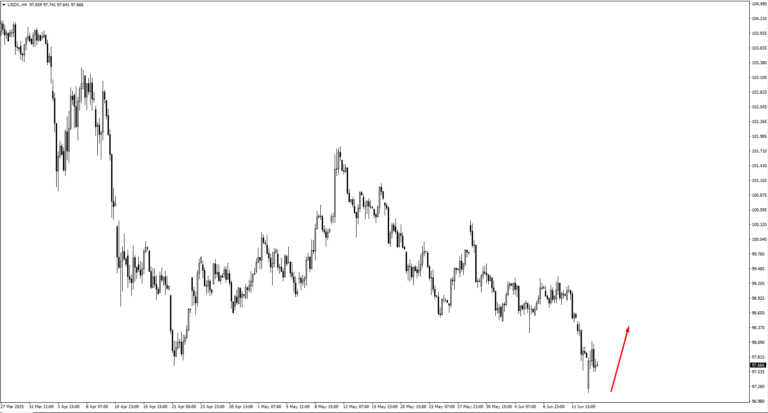
US Dollar Index (USDX) is testing resistance at the 97.90 mark after climbing from 97.139. This zone has previously halted advances, and a break above it could see the index targeting 98.30. On the downside, 96.40 remains a key support for bullish confirmation if momentum fades. With the Fed’s next move pending, expect reactive trading over directional clarity.
EUR/USD hit resistance at 1.1485 and has started to retreat. If buyers fail to reclaim this level, the pair may drift towards support at 1.1420. Alternatively, a bullish rebound would shift focus to 1.1675 and 1.1730 as potential resistance zones. This week’s Eurozone inflation data will be key to determining the next direction.
GBPUSD continues to show strength after taking out the 1.35221 low, but so far has not triggered any major selling pressure. The lack of bearish momentum suggests further upside is possible, with the next key resistance at 1.3670. Whether the pair pushes higher or stalls will likely depend on Wednesday’s CPI report. Any surprise uptick in inflation could change the tone quickly, so we’re staying flexible.
USDJPY dropped from the 145.75 area but found support again near 142.785, a level that has held in previous weeks. The bounce from there suggests bulls may have regained some control. As price moves higher, we’re now watching 145.15, 145.75, and 146.55 for possible bearish reactions. If the BOJ hints at any shift in policy tone when it holds rates at 0.5%, we could see stronger moves either way.
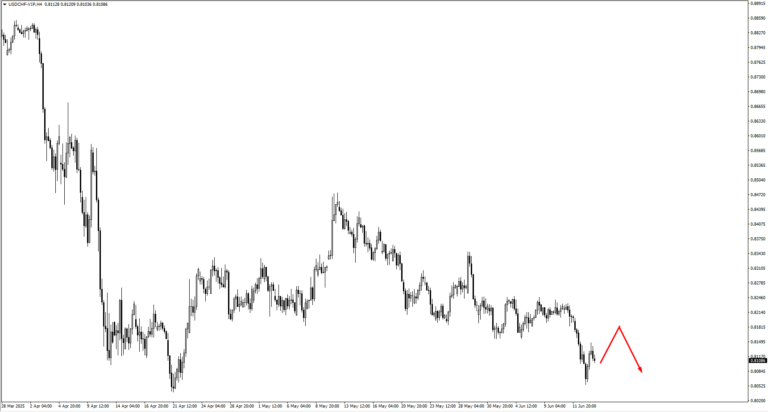
USDCHF remains under pressure and may be setting up for a new leg lower. If price consolidates beneath 0.8195, that area becomes a potential short zone. Should the 0.80388 low be taken out, we’ll be looking for bullish confirmation next, particularly if the SNB does surprise markets by cutting rates from 0.25% to 0.00% as forecasted. Either way, a shift in Swiss franc volatility may follow.
AUDUSD is still caught in consolidation, but the pressure is building. If price pushes up to 0.6575, it could attract sellers looking for a downside continuation, especially with employment data sharply downgraded from 89.0K to 19.9K. We’re also watching how price behaves near the green trend line marked on our chart—this is where we expect any real directional move to show its hand.
NZDUSD continues to respect its support along the green trend line. However, price remains soft, and a liquidity sweep below that line isn’t off the table. If that happens, we’ll be looking closely at the reaction—either to confirm a deeper move or to catch a reversal setup. With limited data out of New Zealand this week, the pair may simply track AUD sentiment.
USDCAD retested the 1.3590 low and even pushed briefly below it, hinting at bearish intent. If this move holds, the next support at 1.3500 becomes the key zone for price action. Stronger oil prices could lend the Canadian dollar a tailwind here, particularly if geopolitical risk continues to support crude. Still, we’re waiting on a clear confirmation before calling for further downside.
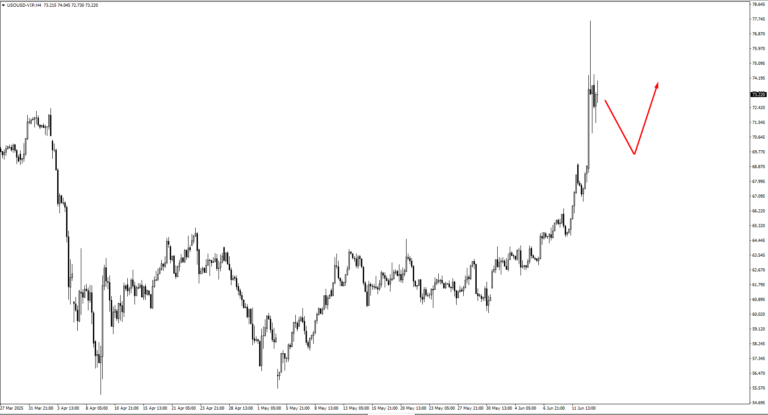
USOil remains supported, with prices holding firm as geopolitical tensions between Israel and Iran remain unresolved. Traders are reluctant to sell into this kind of uncertainty, and if consolidation holds above 68.40, we could see another push higher. However, without fresh headlines, the rally may struggle to gain traction. A pullback to that 68.40 area could attract buyers again.
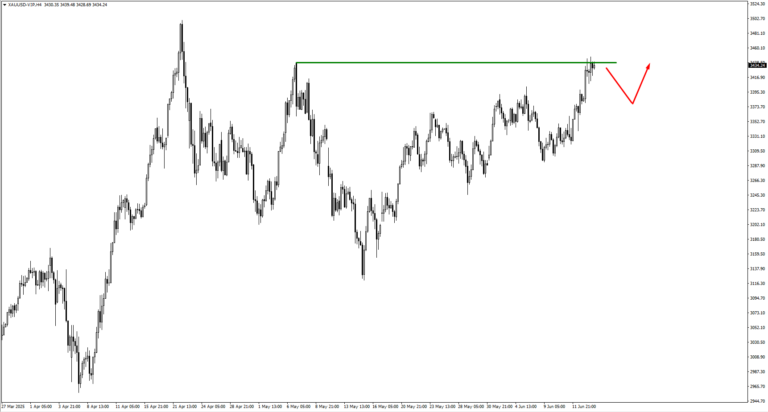
Gold has breached the 3439 level, but confirmation is still lacking. Should prices falter, we’ll be eyeing the 3385 and 3355 levels for buyer interest. The upcoming US inflation data and Fed tone could determine whether gold breaks out or stalls.
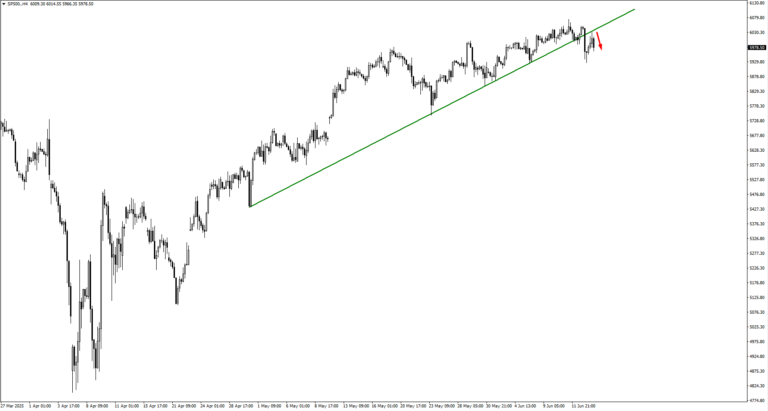
SP500 has pulled back slightly but remains well above the monitored 6000 area. So far, sellers have not shown strong conviction. If price consolidates here, it may just be a pause before another move higher. However, any weakness in earnings forecasts or a hawkish tone from the Fed could trigger a sharper correction. We’re watching for clearer signs of either.
Bitcoin is consolidating after its massive run, with potential bearish setups forming around the 106,950 area. If sellers reclaim control, a drop through the 102,666 low could lead to a deeper flush. On the other hand, continued consolidation may simply be the market catching its breath. Either way, volatility is likely to return soon, so we’re keeping tight watch on the edges of this range.
Natural Gas bounced off the 3.25 area and is now heading toward the 3.52 zone. Bulls will want to see continued follow-through to confirm the move. This week could bring more upside, but traders will likely wait to see if price can hold above the current levels before committing to new longs.
Key Events This Week
On Tuesday, the spotlight turns to Japan, where the Bank of Japan is set to announce its latest policy rate decision. Markets expect it to remain at 0.5 percent, unchanged from previous meetings. However, the real focus will be on any change in language. If Governor Ueda signals the possibility of a rate hike or hints at scaling back stimulus, the yen could strengthen sharply. This would pressure USDJPY, which is already bouncing within a sensitive range. Japanese policymakers have so far resisted tightening, but inflationary pressures and currency weakness may force their hand. Traders should brace for a reactive move, even if the headline rate holds steady.
Come Wednesday, the UK takes centre stage with its Consumer Price Index (CPI) report. Forecasts suggest a year-on-year reading of 3.3 percent, slightly lower than the previous 3.5 percent. While this indicates a modest cooling in inflation, the difference is slim. The reaction in GBPUSD will likely depend on whether price has already made a new swing high before the release. If so, the data could trigger a retracement, especially if inflation undershoots expectations. However, a surprise spike in the numbers could revive rate hike speculation and give sterling a fresh boost. Either way, this CPI print has the potential to jolt the market out of its holding pattern.
Thursday brings a flurry of decisions from four major economies. First up is the U.S. Federal Reserve, expected to keep its Federal Funds Rate at 4.5 percent. After weeks of mixed data and growing calls for rate cuts later this year, traders will dissect the statement for any dovish or hawkish shifts. The Fed’s tone here matters more than the number. If policymakers express concern about sticky inflation or a tight labour market, the dollar could catch a bid. But if the tone leans toward patience or future easing, risk assets could rally further.
At the same time, Australia’s Employment Change data drops, with a sharp drop in hiring projected: 19.9K jobs expected versus 89.0K previously. That’s a steep slowdown, and if the report confirms weakness, AUD could come under pressure—especially if paired with dovish signals from the Reserve Bank of Australia. Price action in AUDUSD has already been drifting, and this data could be the spark for a more decisive move.
Switzerland also enters the fold Thursday with the Swiss National Bank’s rate decision, where markets anticipate a cut from 0.25 percent to 0.00 percent. If that happens, the franc could weaken, particularly against the dollar and euro. But as with most central bank meetings this year, the reaction may depend more on the outlook than the rate itself. Traders will look for clues about how long the SNB expects to remain accommodative, especially amid global divergence in monetary policy.
Rounding out Thursday’s lineup is the Bank of England, expected to leave its Official Bank Rate at 4.25 percent. The decision itself is unlikely to surprise, but the statement could still move markets. If policymakers emphasise persistent inflation risks, GBP could hold its gains or even strengthen. But if they acknowledge progress in disinflation or hint at a more neutral stance, sterling may lose steam.
This week won’t deliver blockbuster surprises on paper, but the tone from central banks and the nuance in CPI figures could still swing markets. We’re preparing for pockets of volatility, especially around FX pairs and commodities tied to rate-sensitive currencies. As always, the message between the lines may matter more than the headline print.







